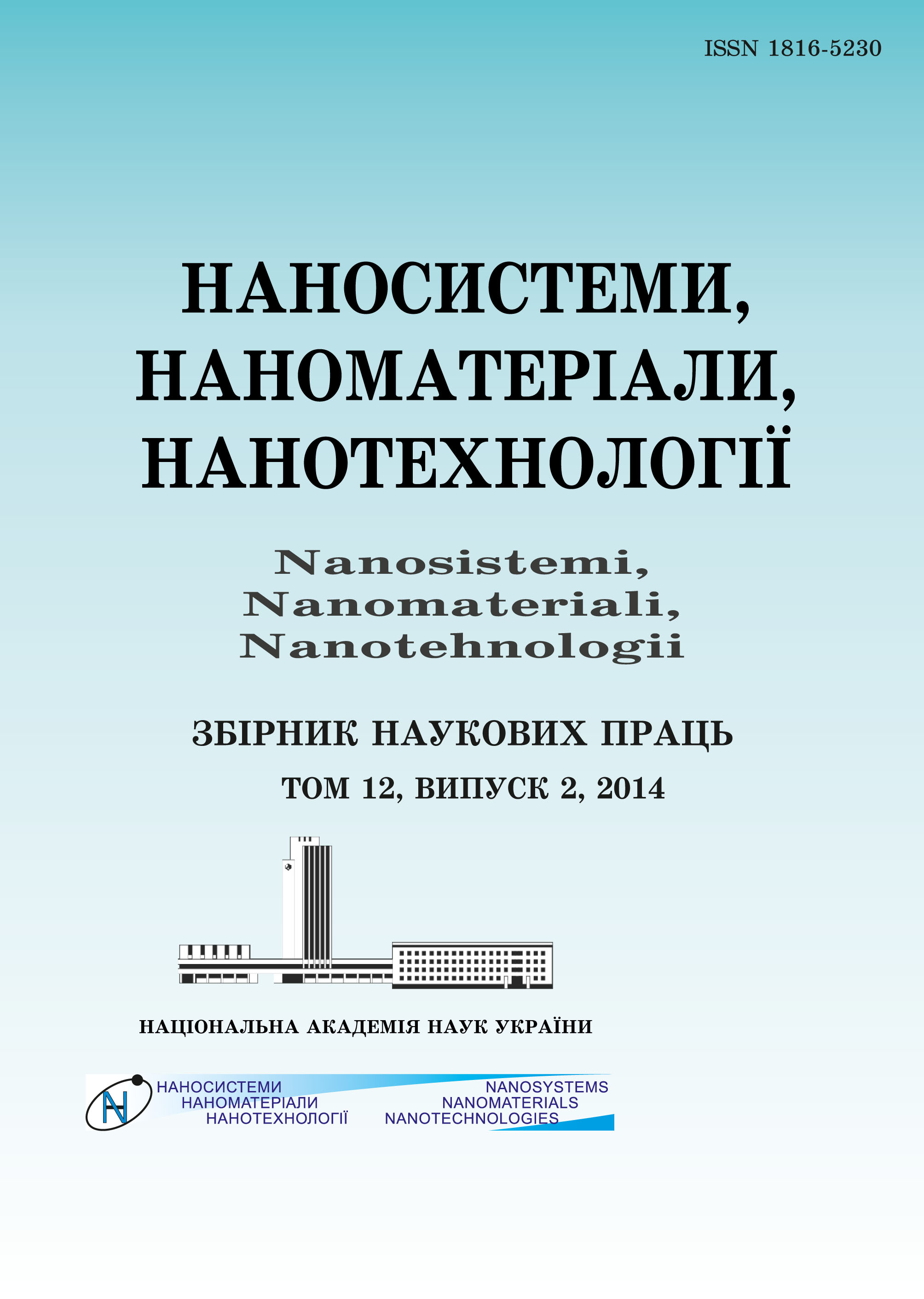|
|
|||||||||
 |
Year 2023 Volume 21, Issue 4 |
|
|||||||
|
|||||||||
Issues/2023/vol. 21 /Issue 4 |
Shaimaa H. Rabah
Biosynthesis of Nanocellulose and Study of Its Properties
859–866 (2023)
PACS numbers: 61.05.cp, 68.37.Hk, 81.05.Lg, 83.80.Mc, 87.64.Ee, 87.64.km, 87.85.Rs
Nanocellulose is an important material with many applications. This work presents an easy and environmentally friendly way to prepare nanocellulose. The method is based on anaerobic fermentation of agricultural waste. The resulting cellulose has nanoscale with a size of about 18 nm and crystals with a size of 15 nm. Compared to the acid hydrolysis method, this method gave better results. As found, the dimensions and crystallization rate are decreased with increasing fermentation time. 37C is the optimum temperature for the fermentation preparation process. The yield of nanocellulose is 23% of the amount of cellulose-rich residue added at the beginning of the process.
Key words: nanocellulose, fermentation, XRD, SEM, wheat straw.
Issue DOI: https://doi.org/10.15407/nnn.21.04.859
References
- B. McGlasson, TOMATOES, 1, Iss. 2: 5800 (2003); doi:10.1016/b0-12-227055-x/01198-6
- G. Mateus, Agricultural Residues as Animal Feed, 3, Iss. 2: 235 (2018); doi:10.1016/B978-0-444-63990-5.00012-8
- B. R?nby, Natural Cellulose Fibers and Membranes: Biosynthesis, 1, Iss. 2: 1 (2017); doi:10.1016/B978-0-12-803581-8.02268-2
- D. V. Van and G. M. Theo, Application of Cellulose and Cellulose Derivatives in Pharmaceutical Industries, 1, Iss. 1: 1 (2013); doi:10.5772/55178
- S. Gopi, P. Balakrishnan, D. Chandradhara, D. Poovathankandy, and S. Thomas, Materials Today Chemistry, 13, Iss. 2: 59 (2019); doi:10.1016/j.mtchem.2019.04.012
- H. Kargarzadeh, I. Ahmad, I. Abdullah, A. Dufresne, S. Zainudin, and R. M. Sheltami, Cellulose, 19, Iss. 3: 855 (2012); doi:10.1007/s10570-012-9684-6
- Tiffany Abitbol, Amit Rivkin, Yifeng Cao, Yuval Nevo, Eldho Abraham, Tal Ben-Shalom, Shaul Lapidot, and Oded Shoseyov, Current Opinion in Biotechnology, 1, Iss. 39: 76 (2016); doi:10.1016/j.copbio.2016.01.002
- A. Balea, M. Monte, N. Merayo, C. Campano, C. Negro, and A. Blanco, Molecules, 3, Iss. 25: 526 (2020); doi:10.3390/molecules25030526
- A. Al-Hamdan, A. Al-Falah, F. Al-Deri, and I. Al-Ghoraibi, Nanosistemi, Nanomateriali, Nanotehnologii, 20, Iss. 1: 195 (2022); https://doi.org/10.15407/nnn.20.01.195
- V. Agbor, N. Cicek, R. Sparling, A. Berlin, and D. B. Levin, Biotechnol. Adv., 5, Iss. 29: 675 (2011); doi:10.1016/j.biotechadv.2011.05.005
- A. Al-Hamdan, A. Al-Falah, and F. Al-Deri, Kuwait Journal of Science, 48, No. 3: 1 (2021); doi:10.48129/kjs.v48i3.9624
- M. A. Akhlaghi, R. Bagherpour, and H. Kalhori, Build. Mater., 1, Iss. 1: 241 (2020); doi:11806110.1016/j.conbuildmat.2020.118061
- A. Al-Hamdan, A. Al-Falah, F. Al-Deri, and M. Al-Kheder, Polym. Sci. Ser. B, 63, No. 3: 191 (2021); doi:10.1134/S1560090421030015
- M. Alavi, E Polymers, 2, Iss. 19: 103 (2019); doi:10.1515 epoly-2019-0013
- D. Beyene, M. Chae, J. Dai, C. Danumah, F. Tosto, and G. Demesa, Materials, 3, Iss. 11: 1272 (2018); doi:10.3390/ma11081272
- C. S. Espinosa, T. Kuhnt, E. J. Foster, and C. Weder, Biomacromolecules, 1, Iss. 14: 1223 (2013); doi:10.1021/bm400219u
- M. Cheng, Z. Qin, J. Hu, Q. Liu, T. Wei, and W. Li, Polym., 2, Iss. 31: 1157 (2020); doi:10.1016/j.carbpol.2019.115701
- M. Islam, M. Alam, and M. Zoccola, Int. J. Innov. Res. Sci. Eng. Technol., 1, Iss. 2: 5444 (2013).
- D. Beyene, M. Chae, J. Dai, C. Danumah, F. Tosto, and A. Demesa, Materials, 2, Iss. 11: 1272 (2018); doi:10.3390/ma11081272
- C. Campano, A. Balea, A. Blanco, and C. Negro, Cellulose, 4, Iss. 23: 57 (2016); doi:10.1007/s10570-015-0802-0
- T. Bauchop and D. Mountfort, Cellulose, 42, Iss. 6: 1103 (1981).
 This article is licensed under the Creative Commons Attribution-NoDerivatives 4.0 International License ©2003—2023 NANOSISTEMI, NANOMATERIALI, NANOTEHNOLOGII G. V. Kurdyumov Institute for Metal Physics of the National Academy of Sciences of Ukraine. E-mail: tatar@imp.kiev.ua Phones and address of the editorial office About the collection User agreement |